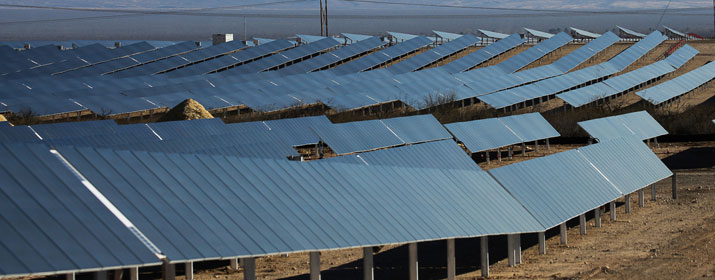
Tucson Electric Power is participating in two efforts to explore hydrogen production, transportation and storage opportunities as we seek cost-effective, cleaner energy solutions in the face of a changing climate.
TEP joined the state’s three public universities and other energy providers in a coalition working to create Arizona’s first federally-funded hydrogen hub to help reduce carbon dioxide (CO2) emissions across economic sectors.
Hydrogen can fuel chemical reactions that produce energy without CO2 emissions. Tapping its potential could support a reliable, resilient electric grid and reduce carbon emissions across many sectors of the economy while creating economic development opportunities throughout the state.
Coalition partners joining TEP in support of the Center for an Arizona Carbon-Neutral Economy include the University of Arizona, Arizona State University and Northern Arizona University, as well as Arizona Public Service, Salt River Project and Southwest Gas.
Participants are investigating the use of existing infrastructure, such as natural gas pipelines, to transport hydrogen to existing generation resources. The Center also is exploring deliveries by emission-free trucks as well as storage opportunities that could support the availability of hydrogen during extreme weather or pipeline disruptions.
“The development of a regional clean hydrogen hub could provide critical support for our ongoing transition to a cleaner, greener grid,” said Erik Bakken, Vice President of Systems Operations and Energy Resources. “Given the complexity of reducing emissions across economic sectors, it’s going to take the energy and commitment of a diverse, engaged set of partners to turn this vision into real, sustainable growth for Arizona’s economy.”
TEP also is involved in an effort led by the Electric Power Research Institute (EPRI) to support the development of hydrogen and drive innovation to help decarbonize the industry overall. The five-year Low Carbon Resources Initiative will work to accelerate the development and demonstration of low- and zero-carbon energy technologies, including those using hydrogen.
Bakken said TEP is evaluating upgrades to its natural gas-fired generators that would expand reliability, efficiency and capacity while allowing the future use of hydrogen fuel, which would reduce emissions in energy production.
“TEP is demonstrating its commitment to meeting emissions reductions goals and advancing the innovative technologies needed to get there,” Bakken said.
By working in tandem with other commercial, academic and industrial stakeholders, Bakken said, Arizona is poised to be competitive in qualifying for funding through the bipartisan Infrastructure Investment and Jobs Act.
Why hydrogen?
Although hydrogen is the most abundant element on Earth, it bonds so easily with other elements (usually oxygen – think H2O) that it’s virtually nonexistent in its pure, gaseous form. Because isolating pure hydrogen requires energy, its value as a clean energy resource depends on how it’s produced.
“Blue” hydrogen is produced with non-renewable energy sources, adding the emissions from those sources to its profile. “Green” hydrogen, though, is produced through the use of renewable energy to extract hydrogen from water, with no harmful byproducts. It can then be stored, transported and used on demand – potentially addressing critical shortcomings of other clean energy resources.
Arizona has a number of resources that make it a prime location to work on the viable production, transportation, storage and use of hydrogen, including its weather and abundant undeveloped land. The state’s energy providers also have committed to reduce CO2 emissions. Combined with world-class universities, a healthy environment for innovation and a growing industry base, these attributes could allow Arizona to achieve its own clean energy goals while supporting similar efforts in nearby states.
“We’ve already committed to an 80 percent reduction of CO2 emissions by 2035,” Bakken said. “To get to that last 20 percent is going to require new technology, and hydrogen is a promising one. By taking some steps now, we can really be at the forefront of seeing hydrogen production become economical and reliable.”





